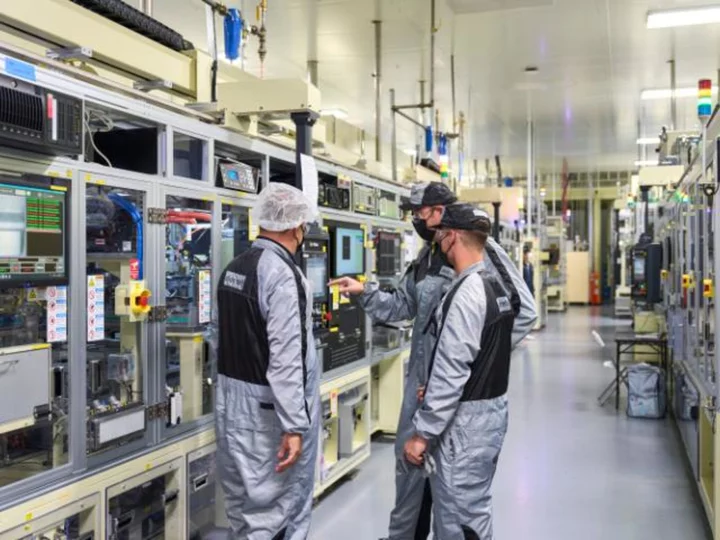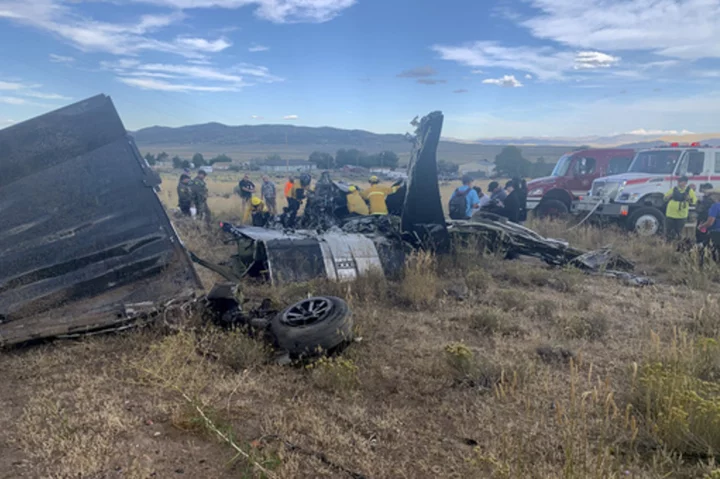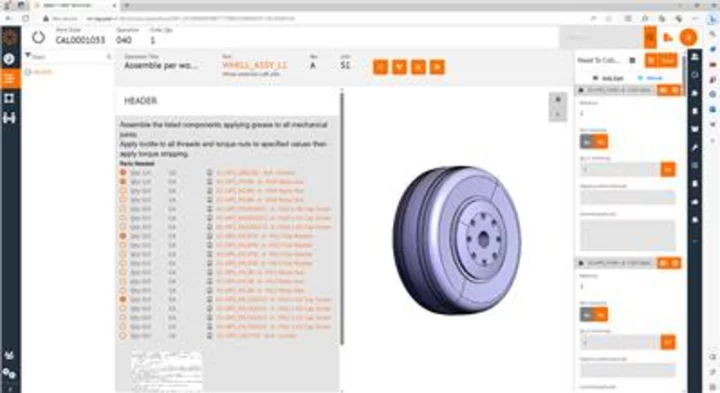The massive Lordstown Assembly factory in Ohio, nearly the size of the Pentagon, more than 50 years old and nearly empty, is a reminder of the past strength of both General Motors and the United Auto Workers union. The much smaller, new electric vehicle battery factory next door could be the future for both the company and the union.
The Lordstown plant opened in 1966; GM closed it just months before its contract with the UAW expired in 2019. That closing, along with that of three other US plants, helped spark a six-week strike at the nation's largest automaker. The UAW won many of its bargaining goals with that strike, including new life for one of those four doomed plants, which today is building EVs. But Lordstown was left without new vehicles to build.
"It's a blight on this town. It'd be a blight on any community," said David Green. He worked at Lordstown for 24 years and is now a regional director for the union in Ohio and Indiana.
Less than a month after settling with the union, GM announced the sale of the plant to an upstart EV truck maker, Lordstown Motors. That company made a few dozen trucks and a few hundred million dollars in losses. It filed for bankruptcy earlier this year.
Today the factory is owned today by Foxconn, the contract manufacturer best known for building iPhones, which plans to make EVs for another upstart, Fisker, starting in 2025. Whether that comes to pass remains to be seen.
The factory dwarfed its namesake town of 3,000 people. In the 1970s, the union says, it once employed up to 15,000 hourly workers. In 2016, nearly 4,000 people worked there. The eastern Ohio Turnpike parallels the massive plant for nearly a mile.
But GM isn't gone from the area -- not entirely.
The automaker still has a presence in Lordstown with partial ownership of an EV battery plant, a key to its plans to convert completely from internal combustion vehicles to EVs by the middle of next decade.
And if the UAW is going to remain a power in the auto industry, it will need to win contracts for EV workers.
'Like I had won the lottery'
The union has had some successes at the battery plant, from winning an organizing vote to landing raises for workers. Some former Lordstown workers helped secure that recent pay hike.
"I thought I was going to retire from Lordstown," said Eric Manaro, a member of the negotiating team who is one of those Lordstown veterans. When he got the job at the plant where his dad worked in 2008, "I thought I had won the lottery."
In 2019, GM formed a joint venture with Korean manufacturer LG to build the massive batteries that power EVs. The joint venture, Ultium Cells, is the key to GM's plans to shift to an all-EV lineup of vehicles by 2035, even though EVs make up only a small fraction of its sales today.
The Ultium plant, just over a third of the size of the closed Lordstown plant, started building batteries last August. In December, nearly 900 hourly employees voted overwhelmingly in favor of joining the UAW. (It now has 1,100 hourly workers.)
But that union membership doesn't mean the Ultium workers are making the same as UAW members at assembly or engine plants operated by GM, Ford or Stellantis, the "Big Three" unionized automakers. Most of those 145,000 union members get $32.32 an hour.
When Ultium opened, starting pay was $16.50 an hour. Although the union got Ultium to agree last month to increase wages by between $3 and $4 an hour, that's more than one-third less than top pay for veteran autoworkers at the Big Three's plants.
UAW leadership at the plant says the raise is only a first step. Its goal is to someday get the members at the plant included in GM's national labor agreement. But they won't predict when that will happen.
"Everyone understands this is far below that pay now," said Manaro. "It's not the be-all and end-all of wages at this point."
But he said the workers are happy with this raise, even if they see it as only a first step. They voted 97% in favor of ratifying the deal.
"Members are looking at a minimum of $600 more a month. Who wouldn't want that?" said Manaro.
A 'foot in the door'
Many workers in Lordstown were second-, even third-generation autoworkers there.
Justin Brown's father worked at the Lordstown plant for nearly nearly 50 years; Brown, for 10 years. He moved to a GM plant in Missouri in the hopes that Lordstown would soon reopen. He thought the 2019 strike would save the plant. He never got to move back.
"I'm grateful to have a job, but I just miss my family," he said on a trip back to visit parents last month. "There isn't a day that goes by that I don't think, 'They need me.'"
Manaro and some others at Ultium say about 20% of the workers there are former Lordstown employees. Some Ultium workers said they took the lower-paying job with the expectation that they would someday make GM-level pay.
George Goranitis transferred to a GM plant in Spring Hill, Tennessee, when Lordstown closed, but got homesick and tired of making a nine-hour drive to and from his new plant back to see his family and friends on the weekends.
"I wasn't happy in Spring Hill by myself," he said.
So he quit GM and came back to Lordstown, taking a series of jobs including a stint as a correctional officer. He jumped at the chance to get a job at Ultium even though it paid less than some other jobs that were available. That's because he expects Ultium will eventually be paying GM-level wages.
"Like at General Motors, everyone [at Ultium] wants to get their foot in the door," he said.,
But it's not clear if GM can be competitive with other automakers if it pays battery plant employees what assembly line workers are getting.
A sticking point: the shift to EVs
The nonunion automakers are building or planning a dozen EV battery plants of their own, most spread across the overwhelmingly nonunion South.
The UAW is now seeking pay increases of at least 40% in contract negotiations with GM, Ford and Stellantis. The contract expires at 11:59 pm Thursday, and the union said it will go on strike against any companies that don't come to an agreement before then.
The Ultium plant workers aren't at the table for those talks -- but in a sense, they are part of the discussion: The Big Three's plans to shift to EVs are a key sticking point.
Electric vehicles have far fewer parts compared to combustion engines. Fewer parts means less labor -- about 30% less.
Many of the lost jobs will be at engine and transmission plants that the companies own and whose workers are included in the current labor contracts. But to build EVs, GM, Ford and Stellantis have formed joint ventures, like Ultium, with foreign battery companies; those employees will not directly work for the unionized automakers. There are nine more of those plants associated with the Big Three's joint ventures set to open in the next few years.
The union says it is demanding a "just transition" from gas-powered vehicles to EVs as part of any contract. For the union that means significantly higher pay at the battery plants and the right for workers who lose their jobs at existing plants to move to jobs at the battery plant.
Whether the union can win those guarantees remains to be seen.
The autoworkers at Ultium are hoping the battery plant will be such a success that it leads GM to reopen Lordstown and build EVs there itself. But even so, they have not given up hope that they can hold off the EV wave awhile longer, said David Green, the UAW regional director.
"I think GM knows the internal combustion engine isn't going anywhere anytime soon," he said.









